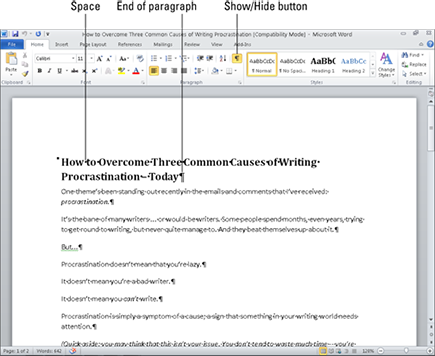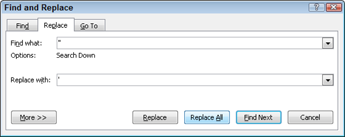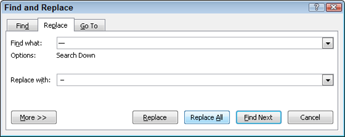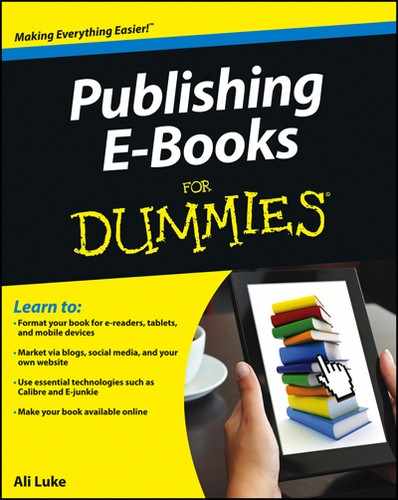Figure 4-1: Word document, showing formatting marks.
Fixing Inconsistent Formatting in Your Current Manuscript
If you’re like most writers, your finished manuscript isn’t in perfect shape. Perhaps you’ve written your e-book in several separate document files, all with slightly different formatting. Even if everything in the document looks correct on your screen, all sorts of weird and wonderful formatting may be in effect — causing problems when you convert the Word document into an EPUB file or a MOBI file. (Formatting in a PDF file is less of an issue, but poor formatting can still create problems in an element such as the table of contents.)
A spring-cleaning is therefore crucial for your manuscript. Similar to spring-cleaning your house, you have to reach every nook and cranny rather than settle for a tidy-looking surface.
You may spot certain problems in your manuscript — and not know how to fix them efficiently. You might even believe that readers won’t notice minor formatting inconsistencies. To help your e-book create a truly professional impression, format it as thoroughly and consistently as possible.
Viewing formatting marks
To view the behind-the-scenes formatting of your manuscript, click the Show/Hide button on the Home tab of the Ribbon in Word. The button, which is in the Paragraph section, looks like the Paragraph symbol (a backward P), as shown in Figure 4-1. Click the button once to turn on formatting symbols, and click it again to turn them off. In Figure 4-1, you can see several Paragraph symbols (which indicate line breaks) and individual dots between words (these represent spaces).
Fixing punctuation marks
Keep an eye out for trouble spots related to these three punctuation marks:
![]() Quotation marks
Quotation marks
![]() Periods (and the spaces that follow them)
Periods (and the spaces that follow them)
![]() Dashes
Dashes

Quotation marks
If you’re writing fiction, you’ll almost certainly use quotation marks (or quotes or inverted commas) to indicate that a character is speaking; if you’re writing nonfiction, you may well include direct quotes from experts in the field you’re writing about. Keep in mind that in the United States, double (“double”) quotation marks are standard; however, you may prefer to use the convention of your home country, or you may simply like the look of single (‘single’) quotation marks. Whichever type you use, the key is to be consistent.
If your e-book is compiled from various articles or chapters over an extended period, you may find that you’ve used quotation marks inconsistently. You can easily switch from double to single quotation marks by using the Find and Replace feature. Follow these steps:
1. Press Ctrl+H to open the Find and Replace dialog box.
2. Type the double quotation mark (") in the Find What box, and type the single quotation mark (') in the Replace With box, as shown in Figure 4-2.
If you need to switch from single to double quotation marks, you must do this manually because Find and Replace also changes all apostrophes if you click Replace All.
Figure 4-2: Using Find and Replace to replace double quotation marks with single ones.

3. Click the Find Next button to jump to the first instance of double quotation marks in your document.
4. Click the Replace button to replace the text (or Find Next again if you don’t want to replace the selected text).
5. Repeat Steps 3 and 4 until you’ve finished replacing text.
Spaces
Writers were taught traditionally to type two spaces after a period. Modern fonts make one space sufficient, so two spaces now look odd to many readers. You can easily remove any double spaces in your document by using Find and Replace: Simply press the spacebar twice in the Find What box and once in the Replace With box, and click Replace All. (If you want to test the process of finding double spaces, use the Find Next button.)
Dashes
The dash character, which can be used in several different ways within a sentence, is different from the hyphen, used to join or divide words or numbers. To complicate the issue, you have to choose which type to use — the en-dash or the em-dash (which is a little longer than the em-dash):
![]() En-dash: –
En-dash: –
![]() Em-dash: —
Em-dash: —
To select these characters, choose Symbol from the Symbols group on the Insert tab, select More Symbols from the drop-down list, and in the Symbol dialog box, select General Punctuation from the Subset drop-down list. Alternatively, Word will, by default, autoformat two joined hyphens surrounded by spaces into an en-dash and two joined hyphens with no surrounding spaces into an em-dash. To change your autoformatting options, click the File tab and then choose Options⇒Proofing, click the AutoCorrect Options button, and then select the AutoFormat tab.
You can replace the dash in your document with another character by using Find and Replace. Remember to insert spaces too, if appropriate. Figure 4-3 shows how to convert the em-dash to an en-dash that has a space on both sides.
Figure 4-3: Replacing the em-dash with the en-dash.


